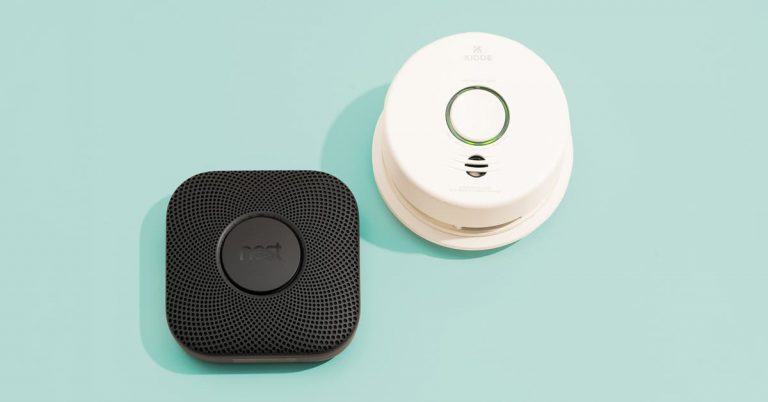The 4 Best Wired Earbuds of 2025
We’ve tested more than 150 earbuds and in-ear monitors for this guide and considered many more, so we can’t include everything here. Below are a few noteworthy pairs we tested recently; check out this spreadsheet for our testing notes on many other pairs.
1More Penta Driver P50: We love that this pair is comfortable, lightweight, and equipped with a three-button remote and mic. Unfortunately, in our tests the highs had a harsh, hissing quality, and the bass was diminished, so anything with low notes felt unsupported.
EarFun EH100: This pair includes two sets of sound filters: “balanced” and “bass-boost.” We found that the “balanced” filter reproduced lovely mid and high frequencies, but the lows seemed insufficient. The bass-boosting filter, meanwhile, boosted the deeper notes, but the EQ was too broad, so low notes sounded bloated and somewhat smeared. Additionally, one tester found that the tips would pop off in their ears when they were removing the earbuds.
FiiO FH3: This pair’s lovely mids and restrained low frequencies were marred by overly emphasized and jagged highs. We found ourselves wanting to increase the volume to hear the lower ranges better, but once we did, the spike between 7 kHz and 8 kHz grew painful. The build quality seemed great, though.
FiiO FH11: FiiO put some thought into this pair’s build. The earbuds themselves are reasonably sized and have color-coded connection points and cable ends that make connecting easy. Unfortunately, this pair sounded overly intense in the higher frequencies, with a peak at 4 kHz and another boost between 8 kHz and 10 kHz. Even when we set the volume for reasonable mid-frequency response, the sound became painful when hi-hats or crash hits occurred.
Final VR500: These earbuds are lightweight and affordable, and the single-button remote is a nice addition. However, we found that the sound leaned heavily toward the top end and lacked the detail and balance of our budget pick.
Hidizs ST2 Pro: We appreciated the addition of a single-button remote and mic, but we weren’t fans of the sound. This set was going for a “warm” sound but ended up with an upper-low boost that made everything sound muddy.
HiFiGo Pula PA02: If you use an external DAC/amp, this pair is a fantastic option for bass-lovers. In our tests, low notes sounded full and pleasantly forward, with detailed and clear mids, as well as a touch of extra detail in the highs that was neither sibilant nor sizzling. However, the PA02 has 36 ohms of impedance, the impact of which became evident when we listened directly via a laptop or a mobile phone. The bass turned bloated and smeared, occasionally losing a sense of pitch entirely. Male vocals got lost in the bassy mire, and tom drums sounded as though they were in another, echoing room. Additionally, we found that the cable transferred some noise, and it has a two-pin connector.
Kiwi Ears Aether: This pair, which uses large planar magnetic drivers, sounded great in our tests, with sufficient bass presence and a subtle boost in the highs that added crispness rather than sibilance. However, the earbuds are massive. Imagine trying to fit hard-cheese cubes into your ears, and you’ll get a sense of the fit. If you have large ears, you might give these a try, but sadly they’re way too big for most people.
Kiwi Ears Airoso: Although this pair is capable of reproducing very low frequencies, the sound profile leaned toward the brighter side in our tests. We found a noticeable spike in the 9 kHz to 11 kHz range that, depending on your preferences, either adds definition or sounds icy and metallic.
Kiwi Ears Cadenza: This set had a high-end spike that caused cymbals to sizzle, piano to have a plinking quality, and nylon acoustic guitar to sound like steel-string.
Kiwi Ears Orchestra Lite: This pair uses eight sets of balanced armature drivers, and housing them all makes the earbuds a little chunky. If they fit you, this pair would be good if you like a moderate amount of bass and highs that feel present without being piercingly jagged. In our tests it produced some extra energy around 2 kHz and between 9 kHz and 11 kHz, but the effect wasn’t as harsh as what we got from much of the competition. The bass had a more neutral presence, with a flat response from 800 Hz down.
Letshuoer S12: Although the highs on this pair remained clear while avoiding the spiky sibilance of much of the competition, we detected a push in the lower mids that could make vocals sound as if they had been miked incorrectly. We also wish that these earbuds had more energy around 40 Hz to balance the sound and add oomph to bass notes. The cable is on the heavy side, especially when you’re accustomed to thinner wires or wireless earbuds.
Linsoul Thieaudio Legacy 2: This pair had nice lows and mids, but we heard a jagged peak in the highs that made “s” sounds whistle. The result was fatiguing and made the overall soundstage seem smaller.
Linsoul Tin HiFi T4 Space Station: This pair offered a sense of space similar to that of the original T4, with slightly more refined bass. However, the upper frequencies had an icy edge, and “s” and “th” sounds had a shush quality.
Linsoul Tripowin HBB Olina: Though this pair felt well built, our panelists found that the highs tended toward harshness, and the overall sound lacked depth in comparison with our picks.
Meze Alba: This pair is well built, but we found a dip in the mids that made the sound seem as though it was lacking energy both sonically and mechanically. It sounded okay at higher volumes, but when we turned the volume down under 50%, the highs were blaring, yet the soundstage felt flat.
SeeAudio Yume II: Our first impression upon opening the box was an intense smell reminiscent of Pine Sol. The sound had intense spikes around 7 kHz and 11 kHz that made violins sound strident and overemphasize fret noise, and it gave vocals an overly breathy quality.
Sennheiser IE 200: Despite advertising a deep and impactful bass, the IE 200 struggled to adequately represent frequencies on the low end. That shortcoming, mixed with the prominence of the highs, caused rock and hip-hop to lack impact, and deeply resonant instruments sounded as though they were missing fullness in the body. That said, if you prefer a more pronounced high end that lends itself to acoustic guitar, violin, and female vocals, those ranges are well represented.
Shure Aonic 4: We had high hopes for this set of in-ear monitors but found that the sound quality lacked the sparkling highs and depth of field we’ve come to expect from similarly priced competitors. The lows were dull and formless, seeming to miss a sense of space.
Soundmagic E11C: This pair leaned too far into the high frequencies and failed to offer enough bass support, and consonants had a whistle-like quality.
Tangzu Wu Zetian: Though this pair provided more bass than some competitors, the highs had a clicky, sizzly quality that gave the sound a high-contrast feeling — the audio equivalent of outlining the subject of a photograph with a black pen. Additionally, the cable was thicker and heavier than many of the others we encountered in our tests, and the included “bass” tips may be too small for people who usually wear large tips.
TRI Starsea: This set has some nice details: The cable is sturdy and pliable, a lot of tips are included, and you can adjust the sound using a series of switches. These switches offer four options, but we found that every one of them was overly bright. Even the “amazing bass” option was still too lean in the low-frequency region to balance the forward highs, and the low notes that were present sounded mushy and resonant.
This article was edited by Adrienne Maxwell and Grant Clauser.






